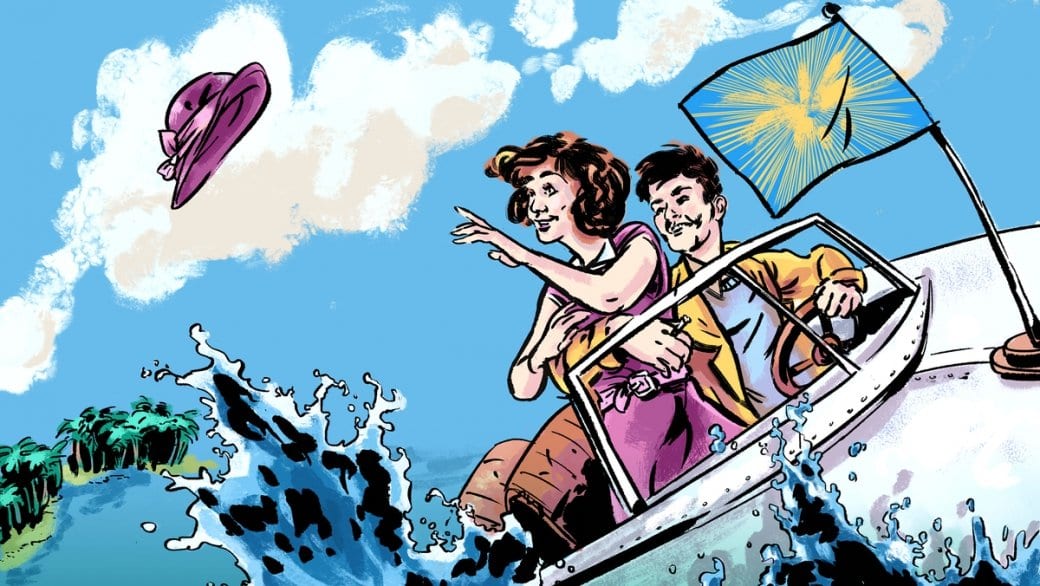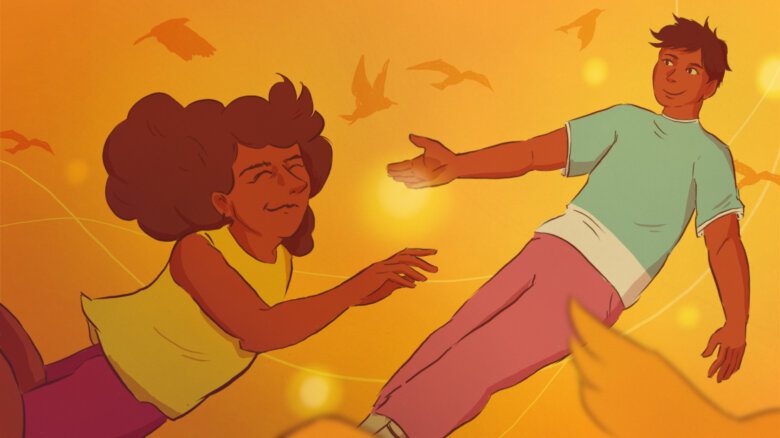The Bahamas has a history of piracy, but by the 1940s, a boat full of American tourists should have been able to travel among its 700 islands unhindered. But when its passengers disembarked on Whale Cay (“cay” is another spelling of quay) they were surprised to find themselves prisoners of the island’s lesbian overlord, Joe Carstairs.
Carstairs presented herself to them dressed as a kind of island goddess. And with the aid of her knife-wielding henchmen, she tied the trespassers up and spent the evening frightening them. They were released the next morning, probably shaken and confused, and Carstairs, who loved a good joke at somebody else’s expense, had a fun story to tell at her next party.
Journalist Kate Summerscale first learned about the eccentric, adventurous Marion “Joe” Carstairs while writing for the Daily Telegraph. Carstairs was born in 1900 in London, England, and died in 1993, and Summerscale was tasked with writing an obituary for the British newspaper. She took it a step further, publishing the biography The Queen of Whale Cay in 1997.
Before becoming, for all intents and purposes, ruler of a little island kingdom, Carstairs became world-famous for racing motorboats in the 1920s. She had developed an affinity for speed while driving ambulances in the First World War, and when the war was over she found a new fix: motorboat racing. It was a new and expensive sport, but Carstairs, heir to an American oil fortune, had the means.
As a woman in that era, she stood out behind the wheel of a motorboat, and she stood out even more given that she was a lesbian and did little to hide the fact. She also adopted a boyish persona — she wore men’s clothes, smoked cigars, chased women, had tattoos up both of her muscular arms and preferred the name “Joe.” (Summerscale doesn’t mention the possibility that Carstairs might have been a trans man. For now, I will assume Carstairs was a cisgender woman.)
The world could accept someone like Carstairs for a time, looking and acting the way she did, and competing in a major sport. During the First World War, women had found themselves doing the jobs of the absent men. As a result, boyish women were more accepted in the period immediately following the war. But the 1930s the media started to turn on her.
According to Summerscale, newspapers began mocking her masculine traits, commenting on her smoking, spitting, chewing gum, tattoos. For this reason, and others, Carstairs decided to leave Britain for good.
Carstairs bought Whale Cay in 1934. The 14 kilometre-long, 6 kilometre-wide island is located only about 150 kilometres east of Miami, Florida, but in the 1930s it seemed more remote, and as a result she did with her island almost anything she liked. The sparsely-populated Bahamas were called the British West Indies then, and according to British law, Carstairs was the judge and jury of the island she owned. She would eventually even give the island its own flag — a yellow sunburst on a blue background.
She hired local people — many of whom stayed to live as citizens of her island — to build roads, a store, a radio station, a schoolhouse, a power plant, a museum/library, a harbour (where she kept half a dozen boats) and the great house. The house looked like a Spanish villa, and had five bedrooms and five large bathrooms. It was completed in 1936.
She soon had groups of friends coming to visit her from Britain and the US. To ensure she had a steady supply of girlfriends on the island, she took frequent trips to New York City, Miami and Europe to find more and bring them back. She treated her guests to movies, poker games, boxing matches, hunting expeditions, trips to nearby islands (Carstairs owned several others, too) and the occasional naked party.
Carstairs’ most constant companion was a boy doll named Lord Tod Wadley, which was given to her by her first love, Ruth Baldwin, during a 1925 trip to the Swiss Alps. Carstairs kept Wadley with her for the rest of her life.
She kept her dashing-if-inanimate companion well dressed in tiny tailored suits. In London, she had a plaque mounted on the front of her house that said “Marion Barbara Carstairs and Lord Tod Wadley.”
So when Baldwin died in 1937, not only was it her first love who died, but the giver of Wadley. As a tribute to Baldwin’s memory, Carstairs built a church on the island and called it The Church of St Catherine (Catherine was Baldwin’s real first name). Carstairs gave the church what she described as “a very very gay priest.” The Reverend Julian Henshaw liked to flash people at parties.
Carstairs had many affairs over the course of her life. One of the her most famous conquests was Dolly Wilde, Oscar Wilde’s niece, whom Carstairs met in France during the First World War. Another was Marlene Dietrich, the famous German actor and singer, whom she met in 1937 in France. Dietrich nicknamed Carstairs “The Pirate.”
When she wasn’t seducing girls or entertaining guests, Carstairs was usually working on some ambitious project or other — from briefly owning a transport company, to her unsuccessful efforts to build a private airport near Miami. She also tried hard to help the local people, who were mostly the poor black descendents of former slaves (and she did some good, but her attitude toward them was problematic given she was a self-professed colonial).
On the island, she always carried a knife in her pocket (and when she posed for nude photos, she clenched it between her teeth), and she seems to have never missed a chance to prank someone — guests, neighbours and unwitting American tourists included.
She gave up her kingdom in 1975, selling Whale Cay and moving to Florida, where she filled her home with mementos, and pictures of her past girlfriends (120 in total). Getting old didn’t seem to faze her much — she got a kick out of how cataract surgery gave her a reason to wear an eye patch like a pirate, and how she was shrinking nearly to “Wadley size.” When she died, at 93 years of age, after a long and eventful life, the beloved Wadley was cremated with her.
History Boys appears on Daily Xtra on the first and third Tuesday of every month. You can also follow them on Facebook.


 Why you can trust Xtra
Why you can trust Xtra


